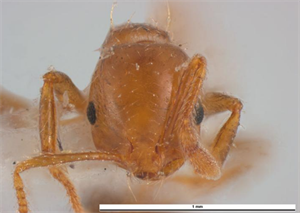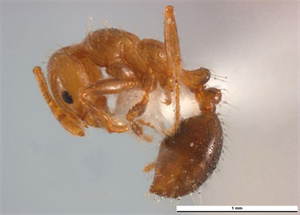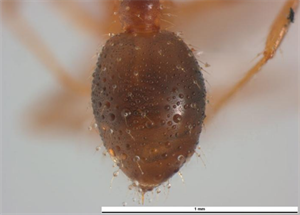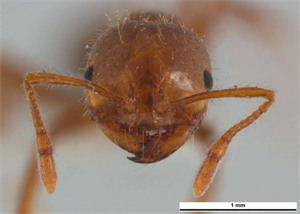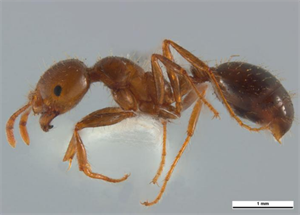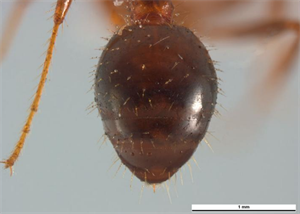- Worldwide distribution. Not recorded from Pacific island countries. Present in Australia (under eradication). Among world's 100 worse invasive species.
- Ground-nesting in sunny agriculture, forest, and grass lands, urban areas. More aggressive and painful sting than tropical fire ant.
- Nests - mounds up to 40 cm, 30-50 cm diameter; entrance holes 5-10 m away. Eat seeds, other insects, smaller vertebrates and honeydew.
- Direct damage: vegetable seeds, fruits, new shoots and roots (large annual costs in US and Australia); loss of biodiversity; indirectly by defending aphids, mealybugs, scales and whiteflies from natural enemies.
- Queens, males and three types of workers: minor, major and intermediate. Nests mostly with 2 or more queens, Up to 500 colonies/ha and each colony 200-400,000. Some with single queens.
- Tramp ant. Spread by queens leaving nest, nuptial flight then new site, or 'budding'; spread via horticultural trade.
- Biosecurity: requires risk assessments, regulations preventing introduction, protocols in case of breaches, and ability to make rapid response. Pacific Ant Prevention Plan available (IUCN/SSC Invasive Specialist Group).
- Natural enemies: several Pseudacteon species under study in USA.
- Cultural control: hot water at 47°C kills ants; over 49°C kills plants.
- Chemical control: use (i) stomach poisons (fipronil, Amdro®, borax), (ii) growth regulators (methoprene, pyriproxyfen), (iii) nerve poisons (bifenthrin, fipronil, imidacloprid). See (http://piat.org.nz/getting-rid-of-ants).
